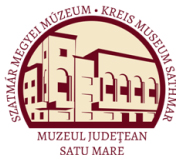Marta, Liviu: The Late Bronze Age Settlements of Petea-Csengersima (Satu Mare, 2009)
VI. Annexes
Pottery shape Paste Decoration type Pottery type No. of elements Plate cup s IB,KH,HB 1 Aa 1 42/4 storage v.c 1 42/5 s MA,IB 1 42/6 cup f HB,KA 1 42/7 f BF 1 f CD 1 f ML 1 s EC 1 pot c 1 Aa 1 Complexes 6, 7, 8 — two pits appeared as three distinct complexes in the sterile soil in 60 cm depth. S36 Complex 6 (Fig. 11, 14) — A pit with bell-shaped profile and oval outline (158 x 210 cm) was found in the sterile soil, in 60 cm depth. The walls were 97 cm high, convex, and reached a maximum diameter of 218 cm at the level of the base. The base was flat. The fill was black, with much daub in the upper part, and was dark-brown downwards. Inventory: 22 ceramic shards, 37 daub pieces, one fragment of a hearth. The ceramic shards originated from at least 12 vessels. Date/culture: Lăpuş II— Gáva I. Pottery shape Paste Decoration type Pottery type No. of elements Plate c ED 1 S 36 Complex 8 (Fig. 11, 14) — A pit with pear-shaped profile and almost round outline (290 x 310 cm) was dug in the sterile soil, in 60 cm depth. The outline of the pit grew narrower until it became circular (160 cm in diameter) at the depth of 20—28 cm. The walls were 125 cm high, arched, so that the base reached a diameter of 208 cm. The base was flat, the dark-grey fill became lighter at the upper part, turning brown. It contained charcoal and scattered daub especially in the upper part. Inventory: 79 ceramic shards (three were re-fired), one clay object (PI. 42/ 8), 52 pieces of daub, three fragments of a hearth clay, two pieces of grinding stones, one animal bone. The ceramic shards originated from at least 14 vessels. Three ceramic shards that originated from two vessels had excised-incised decoradons. Date/culture: Suciu de Sus. Pottery shape Paste Decoration type Pottery type No. of elements Plate f 1 42/8 dish s 3B 1 42/9 cup f GA,HB 4 1 42/10 s GM 1 42/11 dish s 2Aa 1 42/12 cup f FC,CD 1 42/13 f BB 1 p. cooking v.c 1 S36 Complex 9 (Fig. 11, 15) — A pit with oval outline (72 x 108 cm) occurred in the sterile soil in 60 cm depth. The walls were 12 cm high. The base was slighdy convex. The fill was light brown and contained scattered fragments of daub. Inventory: seven ceramic shards, that originated from at least four vessels with unidentified forms, six pieces of daub, one fragment of a grinding stone. Not assigned to an archaeological culture. S36 Complex 10 (Fig. 11, 15) — A pit occurred on an arched surface (320 x 390 cm) in the eastern side of the trench. There were two large, darker inclusions visible from the beginning. One of them was named complex 11. The walls were only 15—23 cm deep over the entire investigated contour of the pit. The fill was light brown and the base was irregular. Inside the pit, the walls were homogeneously steep and 1,04 cm high over an oval surface (130 x 180 cm). The fill was dark brown with grey inclusions. Inventory: 67 ceramic shards that originated from nine vessels, six fragments of daub, one hearth clay. Not assigned to an archaeological culture. 139
